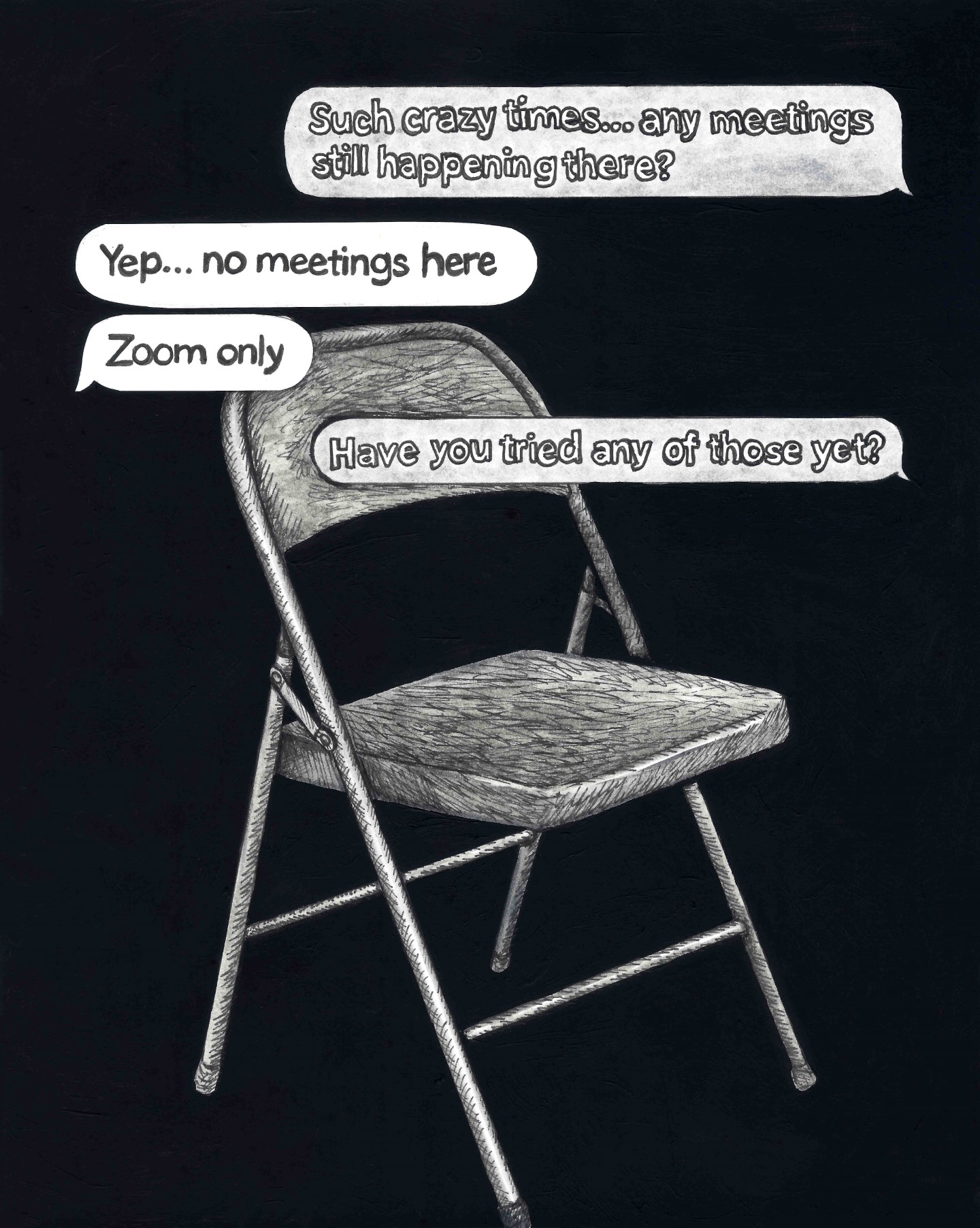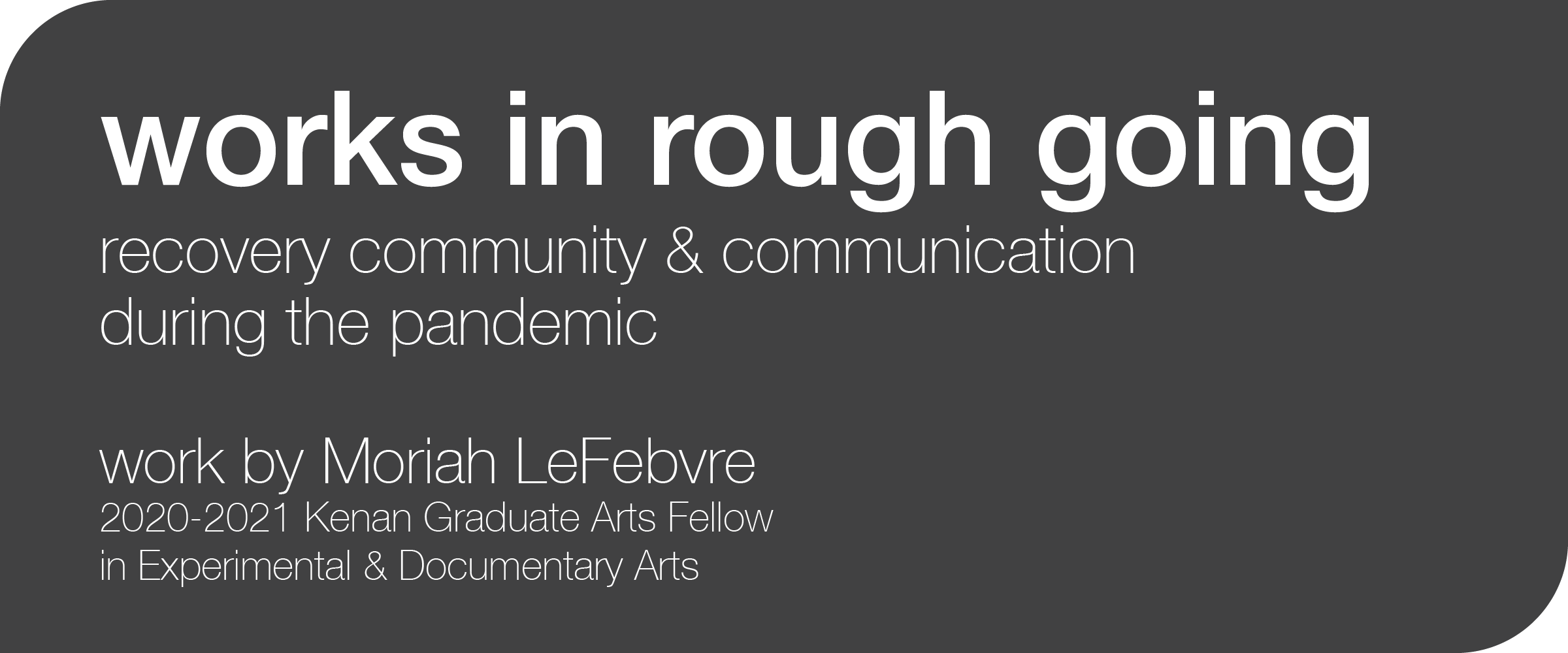Since the inception of the first twelve-step program in 1935, in-person meetings have provided a supportive lifeline for people emerging from substance abuse. As COVID-19 spread around the world and the daily operations of normal life began to shut down last spring, in-person twelve-step meetings went along with them.
Regular meetings create a shared space in which people’s struggles with addiction need not be carried alone. Members gather before and after the meetings; they share hugs and coffee. Members with cars give others who lack transportation rides to and from the meetings. The sense of community serves to combat the tremendous isolation that addiction brings.
The twelfth of Alcoholics Anonymous’s twelve steps, and of the other twelve-step programs that have followed, invites the individual who has found sustained recovery, to carry this message to those who are still sick and suffering. Perhaps most foundational Twelfth Step work is the sponsorship relationship, in which sponsor and sponsee meet regularly, generally in person, and the sponsor guides the newer member through the steps that brought change and recovery in their own life. COVID up-ended these easy, familiar, in-person meetings of two, leaving sponsors and sponsees grappling with new ways to stay connected. Some people had virtual means such as Zoom meetings and iPhones available to them; many others were not so privileged.
Alcoholics Anonymous co-founder Bill Wilson describes the connective power of Twelfth Step work: “I soon found that when all other measures failed, work with another alcoholic would save the day … It is a design for living that works in rough going.” It works in rough going. The eighty-six years since the advent of Alcoholics Anonymous have proven that. It does. But what happens when all of the ways in which it has traditionally worked suddenly disappear?
 The pieces in Works In Rough Going contain words collected and curated from text message exchanges between members of the recovery community paired with the images that these words evoked for me when I took the time to sit with them. Text messages are fleeting and digital. They aren’t meant to last. Yet in the past year, these pixels on screens became lifelines—essential and even sacred—even as the moments they document capture fear and setbacks as well as hope. They deserved to be treated with reverence. I wanted to honor them, to memorialize them and commit them to permanence, deliberately and slowly. I hand drew all of the pieces in this exhibit, sometimes taking the further step of using the sun to expose and create cyanotype prints of the drawn images. Through the process of hand drawing and graphically representing these exchanges, I hope to underscore the kindness and connection when some of the most vulnerable in our midst suddenly became even more so. I hope this exhibit asks important questions about the nature of community, the immense toll of life under lockdown for vulnerable populations, and how communities continue to care and protect one another when their normal ways of doing so are impossible.
The pieces in Works In Rough Going contain words collected and curated from text message exchanges between members of the recovery community paired with the images that these words evoked for me when I took the time to sit with them. Text messages are fleeting and digital. They aren’t meant to last. Yet in the past year, these pixels on screens became lifelines—essential and even sacred—even as the moments they document capture fear and setbacks as well as hope. They deserved to be treated with reverence. I wanted to honor them, to memorialize them and commit them to permanence, deliberately and slowly. I hand drew all of the pieces in this exhibit, sometimes taking the further step of using the sun to expose and create cyanotype prints of the drawn images. Through the process of hand drawing and graphically representing these exchanges, I hope to underscore the kindness and connection when some of the most vulnerable in our midst suddenly became even more so. I hope this exhibit asks important questions about the nature of community, the immense toll of life under lockdown for vulnerable populations, and how communities continue to care and protect one another when their normal ways of doing so are impossible.
My deepest gratitude for those who have been willing to be a part of this project and the enormous trust they have placed in me to both protect their anonymity and to handle their words with care and respect.
For inquiries for the artist
email Moriah LeFebvre at mailto:moriah1985@gmail.com
or see more of her work at moriahlefebvre.com
Instagram @moriah_lefebvre_art

























